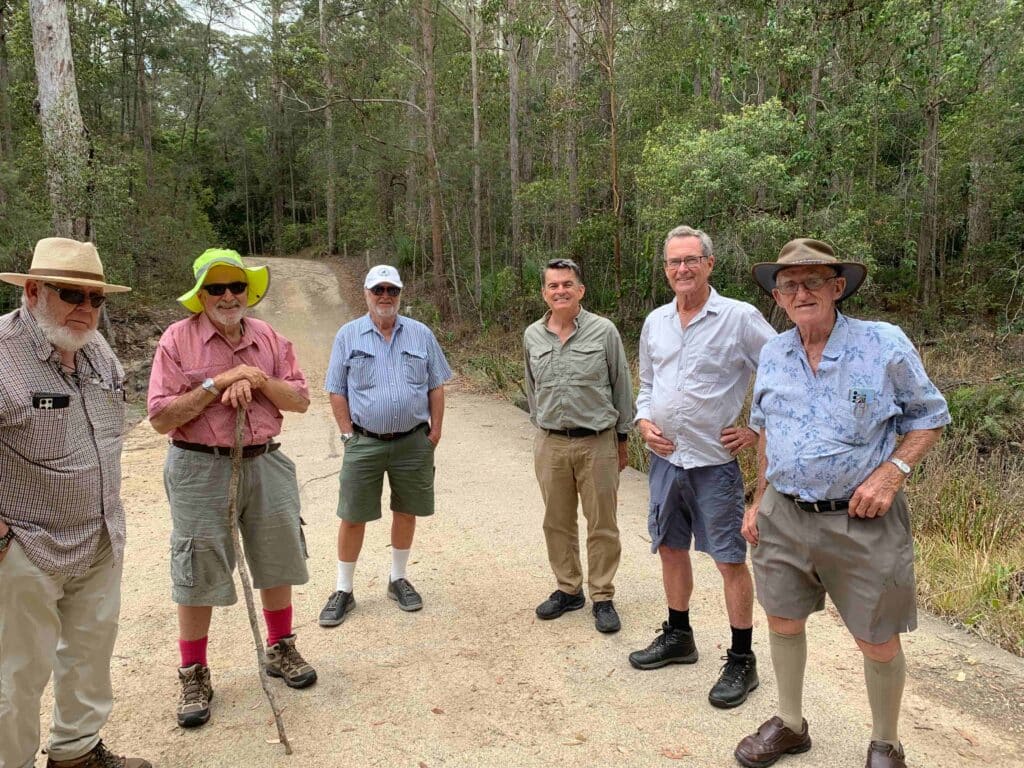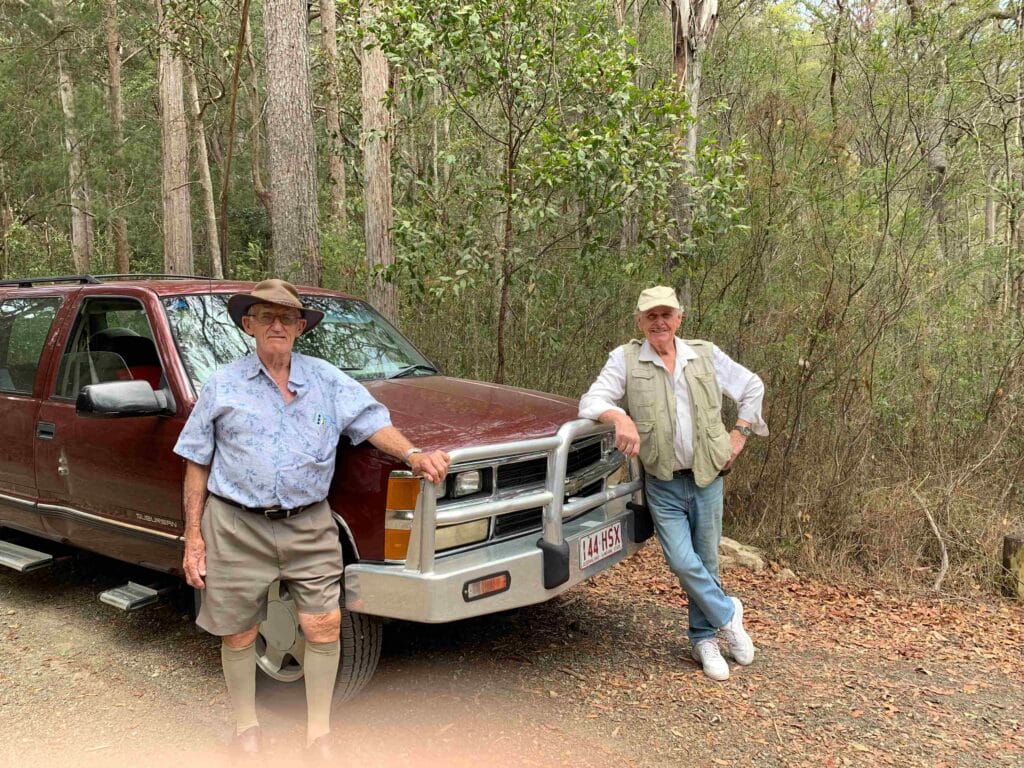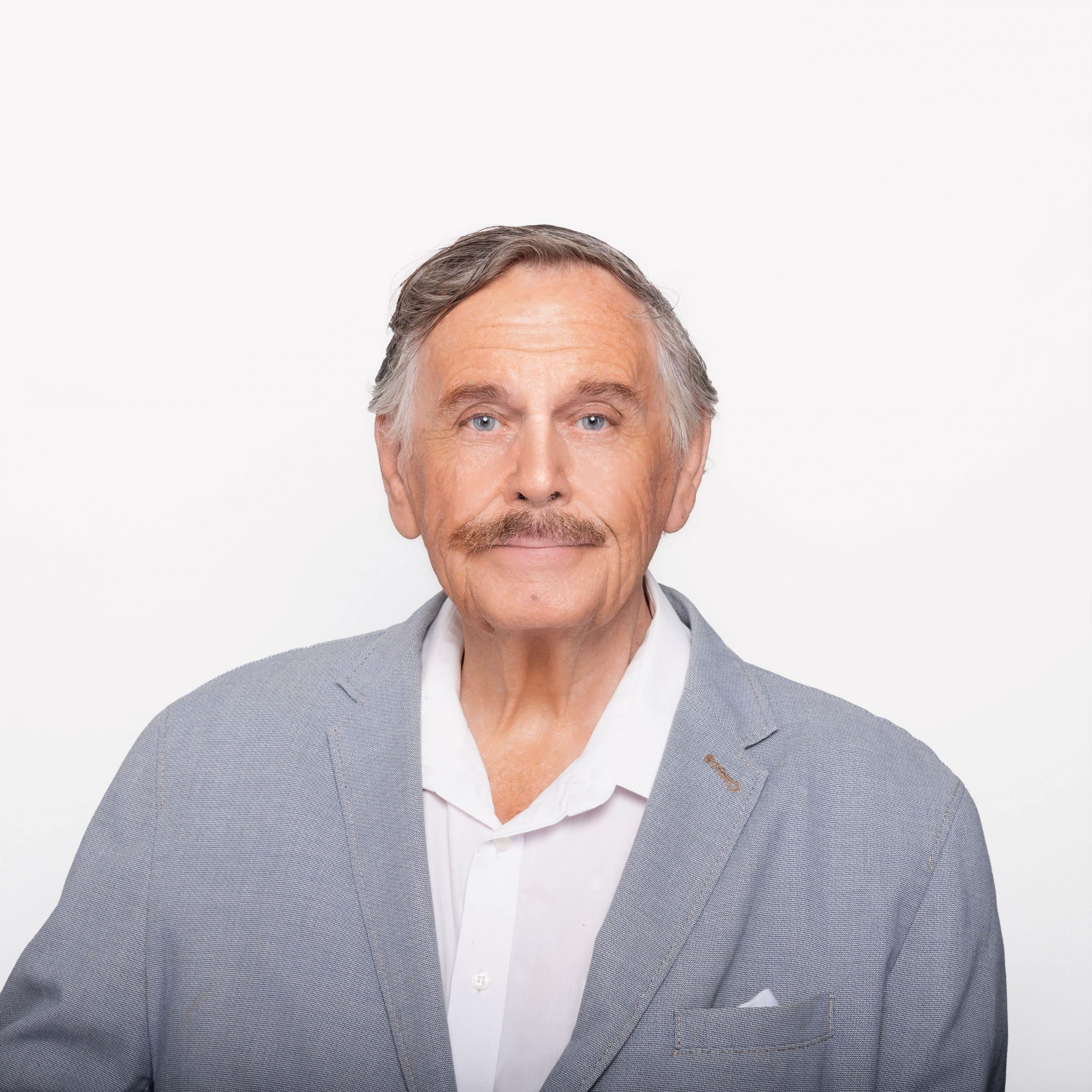On a hot October evening in 1923, a lightning bolt speared into the centre of a tinder-dry eucalypt block in Queensland’s north coast hinterland.
In seconds, flames were licking the rough barks of blackbutt trees; in minutes, a savage bushfire would start across a 22-km front consuming 7300 ha of forests between the tiny towns of Mapleton and Kenilworth, just 120 km north of Brisbane.
Enter Edward Harold Fulcher Swain, Queensland Director of Forests (1918-24), who implemented one of Australia’s most remarkable and successful post-fire forest regeneration strategies.
Swain developed a theory that involved removing and burning the damaged trees and controlling and managing the natural regrowth.

After field germination, the forest floor produced 6000 trees from each fire-burnt hectare. Eventually, when mature, they were heavily thinned in an ongoing forest management regime that made today’s thick, tall and healthy stands of blackbutt (Eucalyptus pilularis) inspected last month by a party of timber merchants, former sawmillers, a veteran tree cutter, the author of a history of the Mapleton National Park, and a timber journalist.
“Regeneration of the forest after the 1923 fire and then recovery from another big burn in 1957 has been, well, simply incredible,” said former log cutter Ron Sutton of Cooroy.
Ron, 89, said inspection of the regenerated Mapleton forest last month was the high point of a long career working among trees.
“In fact, I first worked in this forest in 1953, and today I salute those early foresters who, so to speak, ‘weeded the garden’ – which they did several times … and it flowered.”
Under the tutelage of Swain, those foresters successfully adapted a method of forest regeneration across a mixture of hinterland landscapes, monitoring tree growth under various stocking rates per hectare.
This monitoring continued over many years to determine the best tree spacings for a blackbutt hardwood forest.
Growth has averaged a 1 cm diameter a year, or a 100 cm circumference, over 100 years since the fire, resulting in a hardwood forest today that looks as it must have looked a century ago.
Commercial forest operations at Mapleton on the northern end of the Blackall Range closed in 1995 when it was gazetted as a national park.
However, concerns were mounting that 85 km of horse trails in the park would close. After a long and successful legal stoush, the trails were separated from national park status and re-opened for horse riding, considered a ‘first’ among reserved parks in Australia.

The Mapleton forest, although logged for nearly 150 years, remains a wonderful forested area to explore and enjoy.
Burnard Collins, author of ‘Secrets and Surprises’, a history of the Mapleton National Park, says. However, the park is a wilderness area, he prefers visitations remain at a trickle rather than a torrent.
“There is a huge network of tracks, towering blackbutt trees, magnificent views, moist shady gullies and waterfalls that come to life after rain,” he said.
“Many of us need wild spaces such as these to recharge and feel refreshed.”
One member of the forest inspection party remarked: “I feel God has touched me on the shoulder today.”
The response from another: “Well, Swain was among the gods of re-gen.”
Fast facts: E.H.F Swain was the first cadet forester in the NSW Forestry Branch in 1899. He studied forestry in Montana, USA, in 1915 and became a district forest inspector in Queensland on his return. Between 1918 and 1924, he was Director of State Forests.
Later, after some years as a private consultant, he was appointed sole commissioner for forestry in New South Wales in August 1935. He created a professional staff training scheme and a division of wood technology, which became the commission’s major centre for research.

His conviction of the need for the mutual understanding and cooperation of foresters, sawmillers and timber merchants prompted his fervent sponsorship of equitable royalty (stumpage) systems that led him to found the Eastern States (Australian) Timber Industry Stabilisation Conferences in 1943.
Swain was a confirmed diarist. He had an interest in climatology, especially in the value of homo-climatic indexes for tree introduction and belonged to the Royal Societies of New South Wales and Queensland. Golf, landscape gardening and literature provided his recreation. In retirement, he lived in the Blue Mountains until moving to Brisbane, where he died at Indooroopilly on July 3, 1970, aged 87.
*** ***
Blackbutt gets its name from the rough bark at the tree’s base, which is usually charred black from past bushfires.
The largest blackbutt trees in Australia are found at Birpa in the NSW mid-north coast, a NSW Aboriginal Land Rights region established in the 1970s. Two of Australia’s largest blackbutt trees have survived years of logging and are more than 70 m tall and estimated to be 200 years old.’






